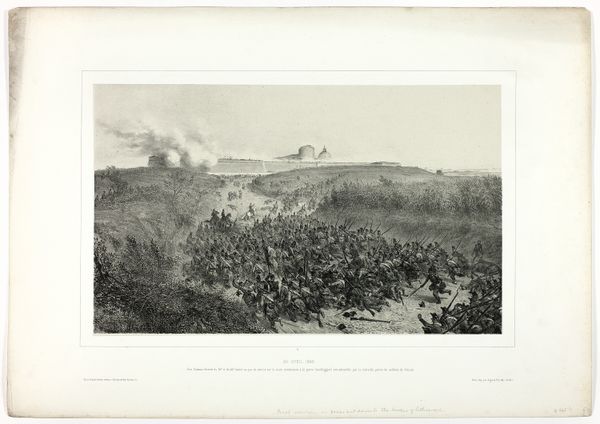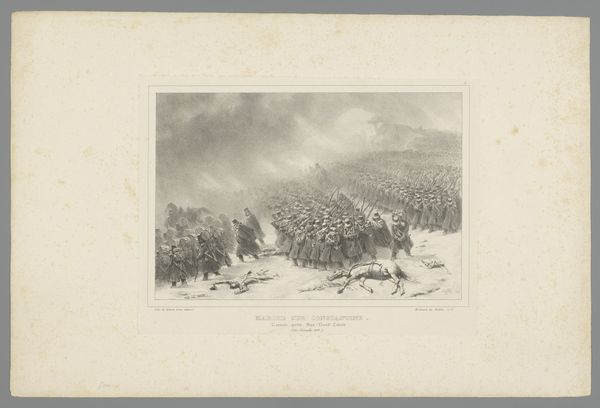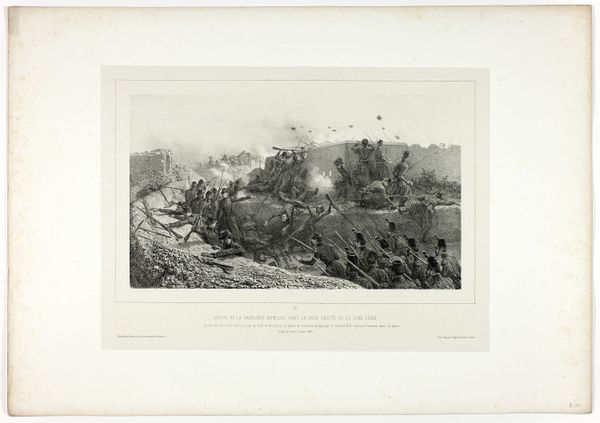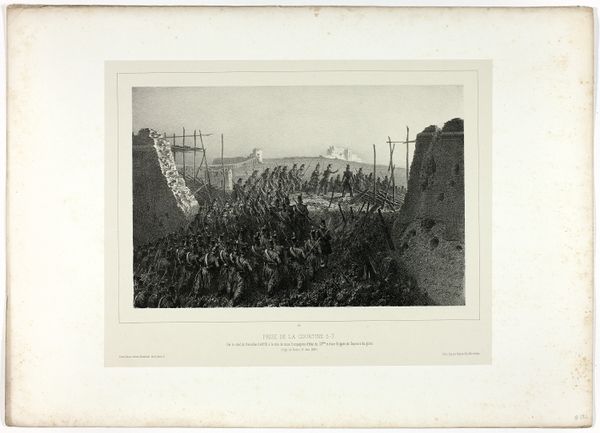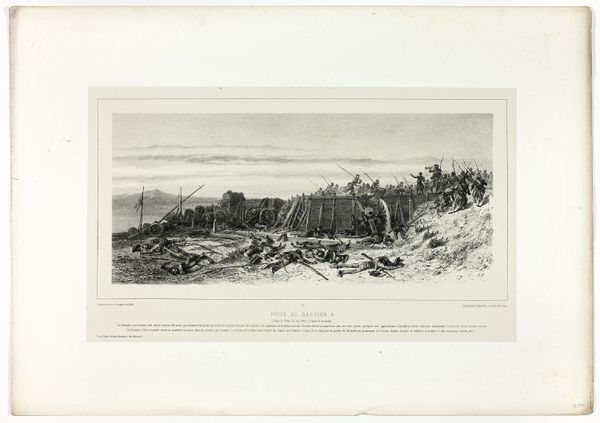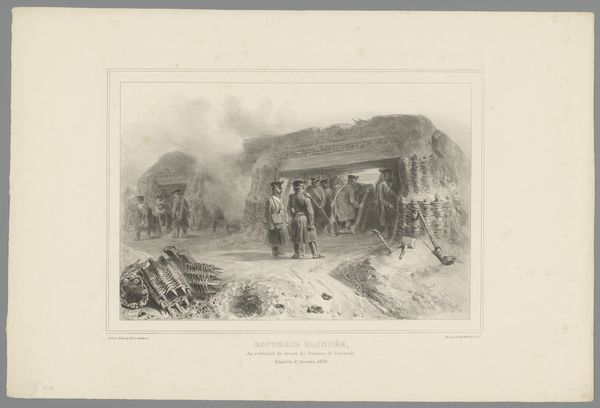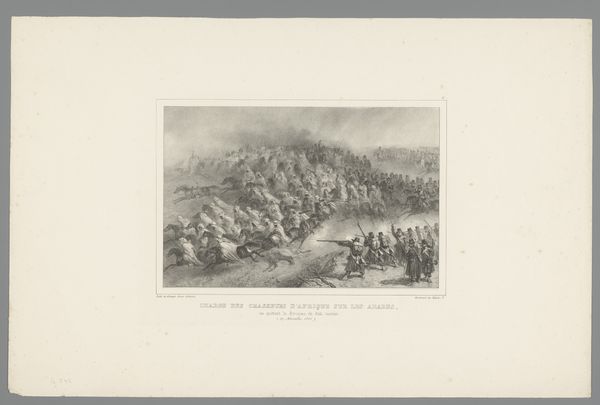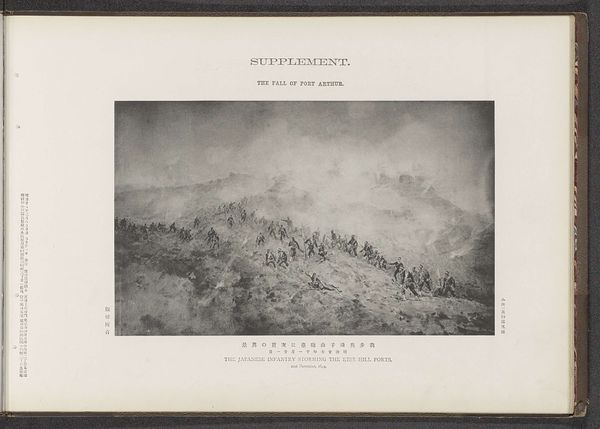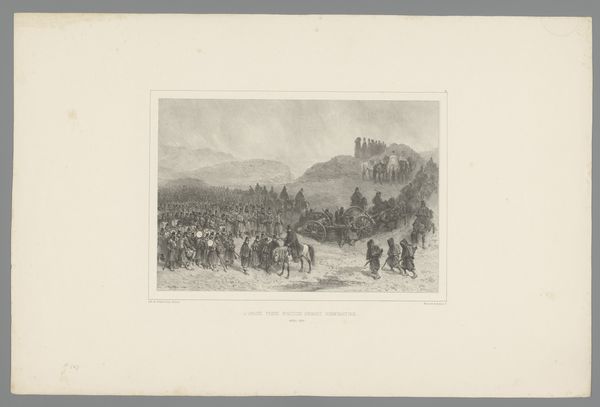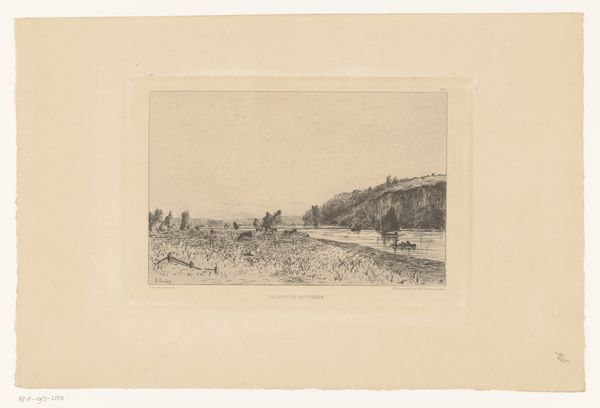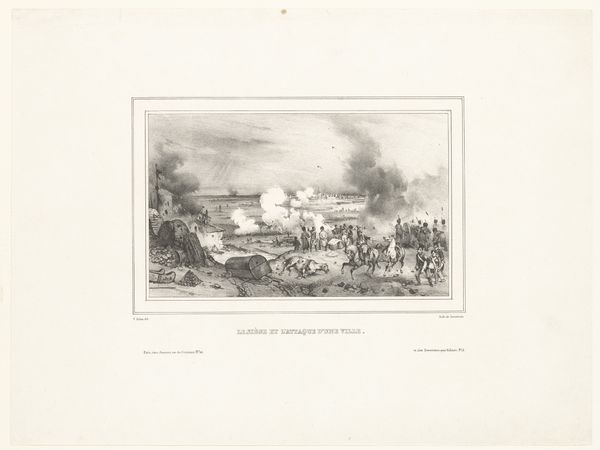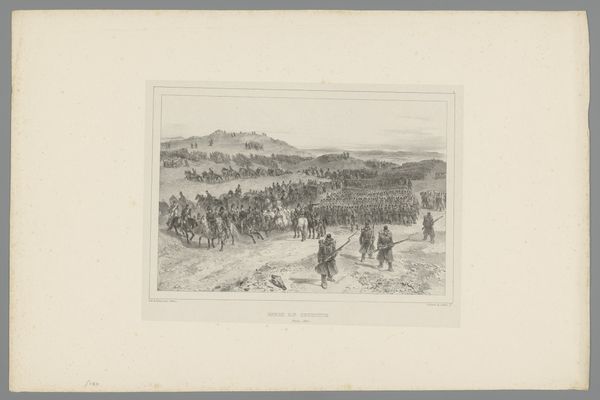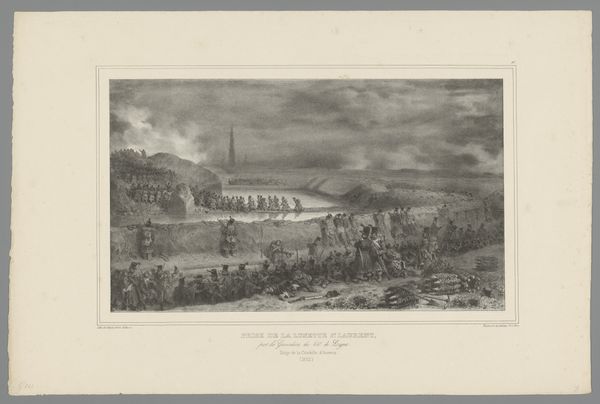
Battery no.10, from Souvenirs d’Italie: Expédition de Rome 1859
0:00
0:00
drawing, lithograph, print, paper
#
drawing
#
lithograph
# print
#
paper
#
history-painting
Dimensions: 208 × 394 mm (image); 294 × 454 mm (primary support); 408 × 568 mm (secondary support)
Copyright: Public Domain
Editor: We’re looking at Auguste Raffet's 1859 lithograph, "Battery no.10, from Souvenirs d’Italie: Expédition de Rome." It depicts a scene of military action. I’m struck by the almost detached, observational quality despite the implied violence. How do you interpret this work within the context of its time? Curator: This image, documenting the French siege of Rome in 1849, demands we consider the political undercurrents of the mid-19th century. Raffet presents a seemingly objective view, but we must ask: whose perspective is prioritized here? It's a depiction of French military might suppressing revolutionary fervor in Rome, re-establishing Papal authority. Do you notice anything about how the composition might reinforce that power dynamic? Editor: Well, the battery is clearly elevated and the city is in the background; it looks like the military has power over the citizens in the town, overlooking them from a height. There's definitely a sense of control. Curator: Precisely. Raffet wasn't just creating an image; he was contributing to a narrative about French interventionism and the perceived necessity of restoring order. Consider how images like these would have shaped public opinion back home. Were they meant to instill pride, or perhaps mask the brutal realities of conflict and the suppression of democratic movements? Editor: So, it’s less about the artistry and more about the politics being portrayed? Curator: Not entirely, as the artistic choices absolutely amplify the political message. The lithographic technique, with its stark contrasts, adds a layer of drama and, dare I say, romanticism to the scene. But we cannot divorce it from its socio-historical implications; its depiction contributes to the visual rhetoric of power and control inherent in that specific historical moment. Editor: That makes me look at it differently. Thanks. Curator: And that deeper understanding is precisely what contextual analysis encourages.
Comments
No comments
Be the first to comment and join the conversation on the ultimate creative platform.
